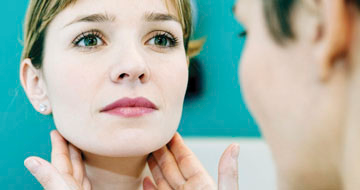
Three Things You Should Know About Skin Cancer
Skin cancer is the most common form of cancer in this country. Over 100,000 people are diagnosed with the disease in the UK every year and the numbers are increasing. However, if you’ve noticed a new lump on your skin, or are worried about a suspicious looking mole – don’t panic. Skin cancer is one of the most treatable forms of cancer, especially if it’s diagnosed early. Here we take a look at three essential things you should know.
1. Skin cancer isn’t always connected to moles
We are often led to believe that moles are the number one cause of skin cancer but that’s not actually the case. Non-melanoma cancers are unconnected to moles and account for over 90% of all skin cancers. It’s therefore a good idea to get any unusual changes to your skin checked out by your GP or dermatologist.
Signs to look out for include a scab that won’t heal properly, a scaly patch of skin that looks inflamed, a flesh coloured lump that’s increasing in size or a ‘crater’ style bump with a pearly rim.
Non-melanoma skin cancers develop in the upper layers of the skin and are usually slow growing. Luckily, they rarely spread to other parts of your body, and in the majority of cases they can be effectively treated and cured if they’re detected early. However, there is a risk of the cancer spreading if your cancer has been neglected for a while and treatment can become more complicated, so make sure you see a GP or specialist if you are at all concerned about your skin.
2. It’s easy to monitor your skin at home
Skin cancer can take months or even years to develop and is easy to miss, so it’s important to carry out regular checks on your skin at home.
The simple solution, according to Consultant Dermatologist Dr Manuraj Singh, is to carry out a quick self-assessment standing in front of a mirror, after a shower:
‘You’d be surprised at what you can pick up – look for anything on your skin that stands out, or looks different, or any moles that are changing in shape, size or colour. Even better, get undressed and get your partner to examine you. It could save your life and only takes a couple of minutes.’
Most at risk are people with lots of moles or freckles and those with a family history of melanoma. If you’ve worked outdoors or lived in hot sunny climates it’s also a good idea to keep a regular eye on your skin for any signs of change.
3. If you are worried about a changing mole, have it checked out as soon as you can
Most of us will have a few moles and in most cases they are harmless. But they can occasionally become cancerous, leading to melanoma. If you’ve noticed any changes to one of your moles, or the appearance of a new one, it’s important to get it examined by a specialist as soon as possible.
Dr Singh, who is an expert in skin cancer, explains why:
‘Only a small percentage of melanoma cancers behave aggressively, but the disease does have the potential to spread to other parts of the body, and in some cases it can be fatal. But if we catch it early, the majority of patients can avoid this – so I would always recommend seeing a doctor as soon as you notice anything unusual on your skin.’
Thankfully, treatment for melanoma is usually straightforward if caught early – minor surgery is used to remove the mole, with microscopic analysis carried out afterwards to confirm the diagnosis.
If you are worried about any changes to your skin and would like to find out more, or make an appointment with one of our Consultant Dermatologists, please call 020 7244 4200.












